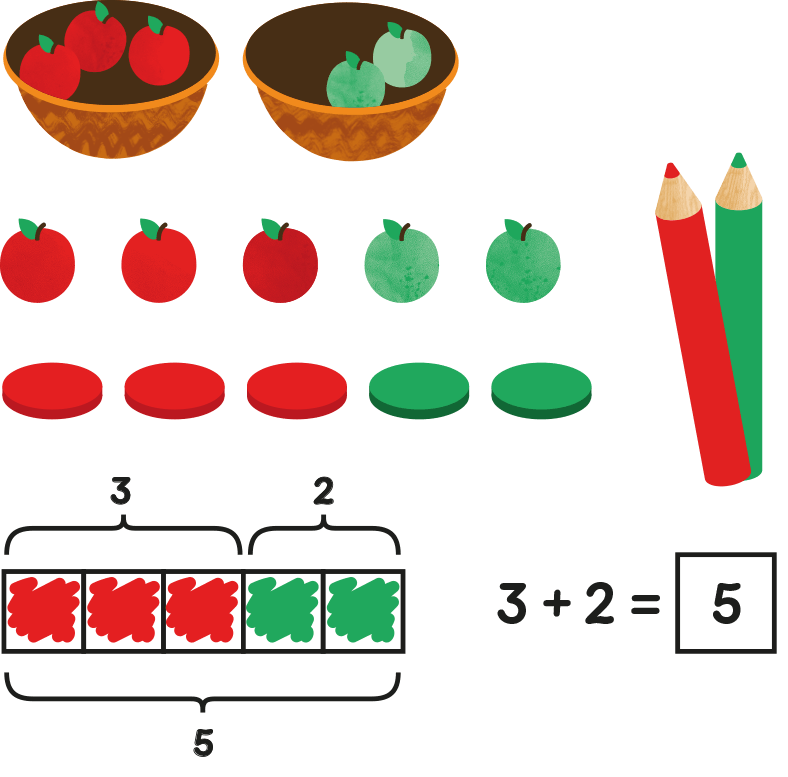CPA Approach
The Concrete, Pictorial, Abstract approach (CPA) is a highly effective approach to teaching that develops a deep and sustainable understanding of maths in pupils. Often referred to as the concrete, representational, abstract framework, CPA was developed by American psychologist Jerome Bruner. It is an essential technique within the Singapore method of teaching maths for mastery.
Interested in learning more about the CPA approach?
See how maths mastery helps every learner develop problem-solving skills using forward-thinking teaching techniques and step-by-step teaching support.
Request School DemoAt a glance
- An essential technique of maths mastery that builds on a child’s existing understanding
- A highly effective framework for progressing pupils to abstract concepts like fractions
- Involves concrete materials and pictorial/representational diagrams
- Based on research by psychologist Jerome Bruner
- Along with bar modelling and number bonds, it is an essential maths mastery strategy
Background to the CPA framework
Children (and adults!) can find maths difficult because it is abstract. The CPA approach builds on children’s existing knowledge by introducing abstract concepts in a concrete and tangible way. It involves moving from concrete materials, to pictorial representations, to abstract symbols and problems. The CPA framework is so established in Singapore maths teaching that the Ministry of Education will not approve any teaching materials that do not use the approach.
Concrete step of CPA
Concrete is the “doing” stage. During this stage, students use concrete objects to model problems. Unlike traditional maths teaching methods where teachers demonstrate how to solve a problem, the CPA approach brings concepts to life by allowing children to experience and handle physical (concrete) objects. With the CPA framework, every abstract concept is first introduced using physical, interactive concrete materials.
For example, if a problem involves adding pieces of fruit, children can first handle actual fruit. From there, they can progress to handling abstract counters or cubes which represent the fruit.

Pictorial step of CPA
Pictorial is the “seeing” stage. Here, visual representations of concrete objects are used to model problems. This stage encourages children to make a mental connection between the physical object they just handled and the abstract pictures, diagrams or models that represent the objects from the problem.
Building or drawing a model makes it easier for children to grasp difficult abstract concepts (for example, fractions). Simply put, it helps students visualise abstract problems and make them more accessible.
Abstract step of CPA
Abstract is the “symbolic” stage, where children use abstract symbols to model problems. Students will not progress to this stage until they have demonstrated that they have a solid understanding of the concrete and pictorial stages of the problem. The abstract stage involves the teacher introducing abstract concepts (for example, mathematical symbols). Children are introduced to the concept at a symbolic level, using only numbers, notation, and mathematical symbols (for example, +, –, x, /) to indicate addition, multiplication or division.

Making CPA work for you
Although we’ve presented CPA as three distinct stages, a skilled teacher will go back and forth between each stage to reinforce concepts.
The Maths — No Problem! Primary Series approach encourages teachers to vary the apparatus that children use in class. For example, students might one day use counters, another day they might use a ten frame. Likewise, children are encouraged to represent the day’s maths problem in a variety of ways. For example, drawing an array, a number bond diagram or a bar model.
By systematically varying the apparatus and methods used to solve a problem, children can craft powerful mental connections between the concrete, pictorial, and abstract phases.
When teaching young children numbers, counters and multi-link cubes are more commonly used in the UK. However, concrete materials are frequently shelved by the time children reach KS2 — many teachers believe them to be too childish or distracting. Removing concrete materials exposes children to abstract concepts too early. As a result, they miss out on the opportunity to build a conceptual mathematical understanding that can propel them through their education.
It is important to recognise that the CPA model is a progression. By the end of KS1, children need to be able to go beyond the use of concrete equipment to access learning using either pictorial representations or abstract understanding. What is important, therefore, is that all learners, however young, can see the connections between each representation.
Find out how proven mastery strategies, world-class training, and step-by-step teacher guides can give you and your school a maths boost.
Learn More About Maths — No Problem!Share your success, be rewarded
Everyone needs a break. Especially the kids that are missing out.
